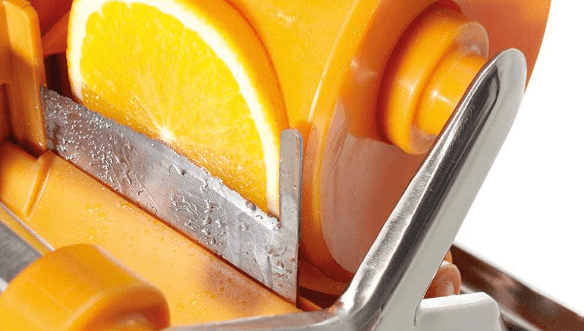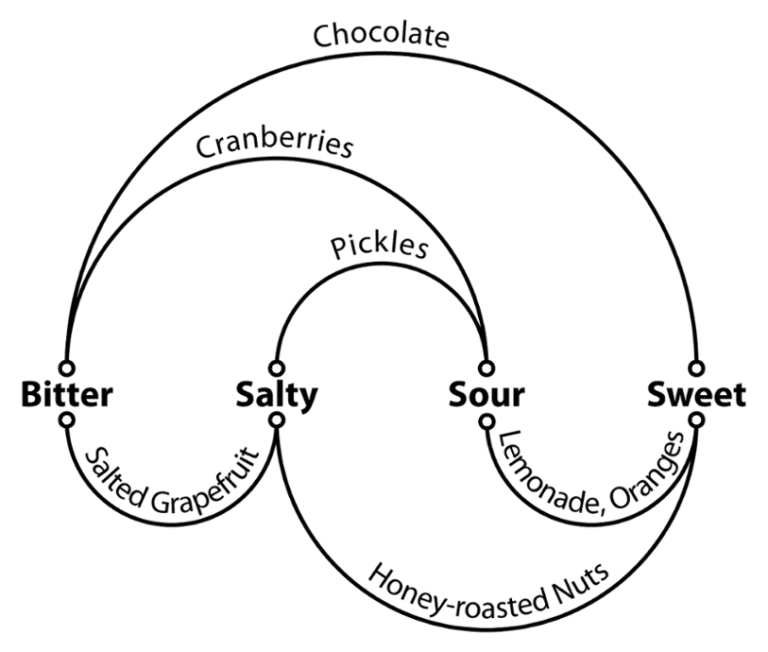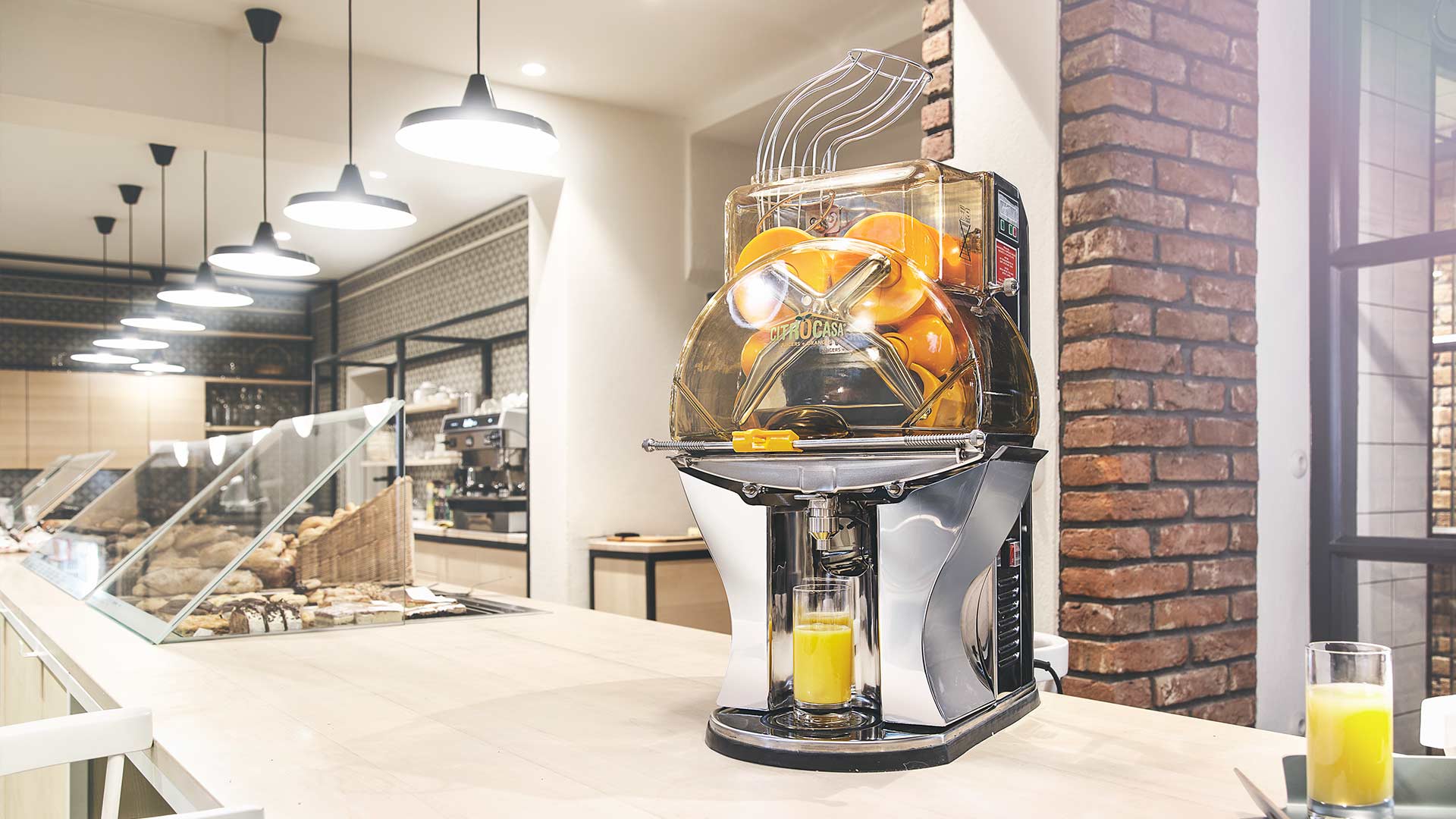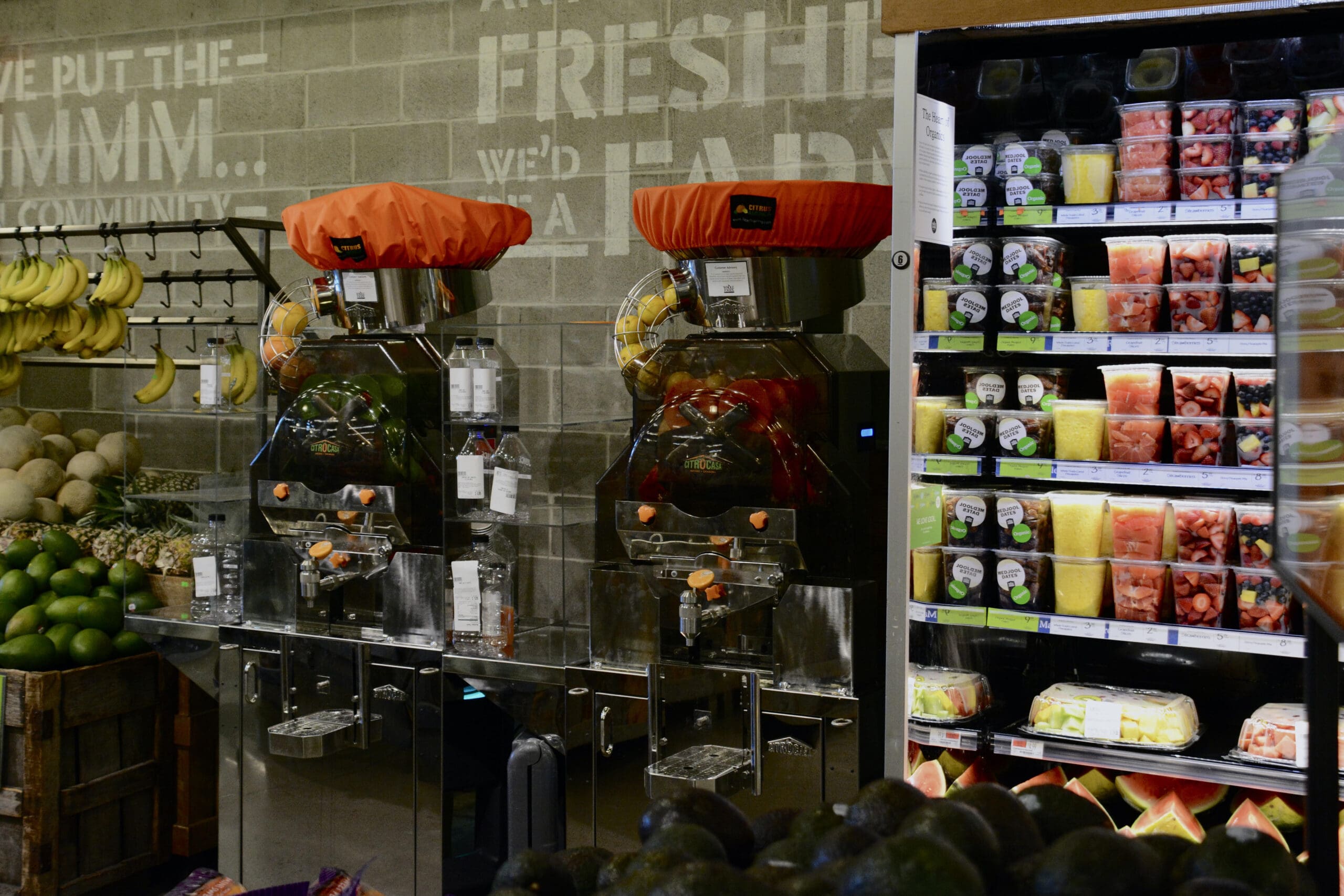The Delicious Taste of Freshly Squeezed Orange Juice
There is a lot of research on what tastes good, why it tastes good, and what influences people’s buying decisions regarding Food & Beverages. This research is an important part of the food industry today. A lot of know-how has been developed regarding sweet, bitter, sour, salty and umami, also known as the fifth taste. In addition, there has been a lot of research into the combined impact of taste and aroma on flavor.
We at Citrus America believe Mother Nature has done an amazing job with developing great-tasting products with incredible aromas, thus producing delicious and unique flavors. Many of these products even come in their own natural packaging to best preserve their flavor and nutritional value until they’re ready to be consumed.
In this article we’ll discuss why freshly squeezed orange juice tastes so good. Why does it taste so good in general and why its flavor profile is so good compared to factory-produced juices. We’ll also discuss some things to consider to help create the best orange juice experiences.
EATING FRESH FRUIT
Drinking freshly squeezed orange juice is like eating fresh fruit – but easier. Juicing is a faster, more convenient way to get to the good stuff. Drinking fresh orange juice also provides a safe & healthy beverage alternative in a world hungry for healthy natural solutions.
Humans have learned to separate the best parts of produce (fruits, vegetables, and nuts) from its “natural packaging.” That natural packaging evolved to protect the fruit until a certain stage in its growth and ripening when it’s ready to be eaten.
When we eat oranges or other citrus fruits, we peel the orange, remove the peel and pith, and enjoy the fruit inside. Like eating an orange, we peel bananas, skin, and core pineapples and separate the rind from watermelon, honeydews, shuck corn, and shell nuts. A long list of produce comes with its own ‘natural packaging’. This packaging evolved to protect the delicious and nutritious insides of fruits, nuts, or vegetables.
MAKING FRESHLY SQUEEZED ORANGE JUICE
For those of us who grew up fortunate enough to have parents (or grandparents) who would squeeze fresh orange juice, the process was pretty simple:
- Cut citrus fruit with a sharp knife
- Juice citrus fruit on a simple press
- Poor juice into a pitcher or glass
- Enjoy the juice
Many of us still enjoy freshly squeezed orange juice at home, and the process is still that simple.
Many of us also enjoy getting fresh juice on the go. Select grocery stores, hotels, cafes, and restaurants prepare fresh juices to meet consumer demand for fresh and natural products.
BUT WHY DOES FRESH SQUEEZED ORANGE JUICE TASTE SO GOOD?
There are five major reasons why fresh orange juice tastes so amazing:
- Quality Fresh Fruit
- A Good Cut & The Right Squeeze
- The Flavor Factors: Taste and Aroma
- It’s the Whole Experience
- Enjoy it Fresh
If you consider all these reasons, regardless of juicing at home or commercially, you can create an amazingly fresh and tasty orange juice experience.
#1 QUALITY FRESH FRUIT
When we think about eating an orange or drinking orange juice, we’re typically thinking about a Sweet orange (Citrus sinensis). There are hundreds of sweet orange varieties to choose from, depending on where you’re located in the world and if you know where to look. Some of these oranges, such as Florida Valencias, are prized for juicing. Others, like California Navels, are highly valued for easier peeling and eating. Other oranges, such as a bergamot orange (Citrus bergamia), are grown for other components, such as the chemicals and oils in their peel.
While ‘orange juice’ has become a very standard term, there are many different types of oranges one can juice to get different flavor juices. Similar to drinking different varieties of red, white and rosé wines, there are many different varieties of oranges one can enjoy. Good fresh orange juice will have different taste profiles depending on the year, the season, and the variety being consumed.
Here is a very brief list of some commonly known orange varieties: Valencias, Navels, Bloods, Jaffas, Kara Karas, Texas Sweets, Hamlins. In addition, there are more varieties that would fall into the Mandarin family (Citrus reticulata), such as tangerines, clementines and satsumas, which are all delicious for eating or juicing.
Ideally, you’re selecting fruit that is properly sized, has good juice yield, and the peel is not too thick. Different varieties have different flavor profiles and juicing characteristics. Regardless of what citrus you’re selecting to juice, it’s important to use fresh quality clean fruit.
You need good fresh fruit to make good fresh juice.
#2 A CLEAN CUT & THE RIGHT SQUEEZE
Using quality fruit is the first step in getting quality juice. Nearly as important as the fruit is to cut and squeeze that fruit the right way to extract the highest quality juice without overly contaminating it with bitter peel oils.
A clean cut of the orange peel means reducing the peel oil jetting out into the juice. Also, by not over-squeezing the fruit we reduce the amount of peel substances entering the juice. This reduces bitterness and helps the juice taste much sweeter without adding any sweeteners. Bitterness and sweetness compete for the same taste buds, so by reducing bitterness we naturally boost sweetness.
An orange peel acts as a natural wrapper. Peel oil and other substances in the peel and the pith is part of the fruit’s defense mechanism. It helps protect the fruit from being eaten prematurely by pests and predators. Orange peels contain substances, such as flavonoids and terpenes, that are nature’s way of protecting the orange until it’s ready to eat.
Many of the substances found in various fruit and vegetable peels act as natural pesticides and fungicides. While there are studies that indicate that many of these substances are beneficial for human health in small doses it’s also known that larger amounts can be detrimental. (Drewnowski/Gomez-Carneros 2000)
The substances contained in orange peels, such as naringin and limonin, can be extremely bitter. Some of these substances are actually flammable. If you cut an unpeeled orange into wedges and suck on the wedges with the peel rubbing on your lips, you might even notice a slight burning feeling on your lips – that’s the peel oil.
By reducing the amount of peel oil contamination in orange juice we reduce the bitterness in the juice and, as mentioned above, increase the sweetness without adding anything.

For home juicers: Use a sharp serrated knife on a cutting board to properly cut your oranges. Squeeze your oranges using a manual citrus press or reamer being careful not to over-squeeze your fruit and getting too much peel oil in your juice.
For commercial juicers: Use equipment that properly cuts the citrus fruit and minimizes peel tearing. Use fruit in line with equipment’s size specifications to reduce tearing and optimize squeezing to extract the juice without getting too much peel, pith, or peel oil in the juice.
#3 THE FLAVOR FACTORS: TASTE & AROMA
Taste is typically defined by five factors: sweet, bitter, salty, sour, and umami. According to Jeff Potter, the human tongue has a few thousand taste buds and taste makes up about 20% of flavor sensation and 80% make up by smell. Flavor and how we perceive the flavor of foods and beverages is a matter of taste and smell. The combinations of the five tastes plus various aromas make for some amazing flavor profiles. Our taste nerve cells, which are clustered in the mouth and throat, and our smell nerve cells, located in the nose, send messages to the brain. These messages converge and allow us to detect the flavor of food. Even though taste and smell are separate senses, it is the interaction between them that determines whether we like something or not.
The below chart illustrates that orange and lemonade flavor combinations are mostly focused on sweet and sour. Orange juice’s flavor profile is typically described using a Brix/Acid ratio, which measures the ratio between the juice’s Brix, or sugar content, and the acid content, a driver of sour taste, driven mostly by citric acid. Of course, this simple measurement does not pick up many of the other tastes and aromas present in oranges. These tastes and aromas are driven by other flavor components, some of which are volatile, meaning they evaporate more easily.

When we make juice at trade events or are doing sampling in stores, many consumers ask why our fresh orange juice coming out of a Citrocasa citrus juicer tastes so good. Some even ask if we add sugar to the juice. NO – we do not add sugar!
Mother Nature has played some tricks on the animal kingdom. Not only can the volatiles in fruit change the overall fruit flavor profile, research from the University of Florida (Bartoshuk/Klee) documents that the volatiles found in various fruit and vegetables can greatly enhance our perception of sweetness. This helps explain why fresh, natural fruit and freshly pressed juices taste so amazingly good. Strawberries, for example, taste good not only due to natural sugars, but also due to the volatile flavor components which are picked up as smells and combine with taste to create complex flavors. As these volatiles evaporate their impact on flavor and perceived sweetness goes down.
Bortoshuk and Klee ran similar experiments with tomatoes and came to similar conclusions. They found that the volatiles can have an even greater impact on perceived sweetness than the sugar content itself. In one case, their experiments showed that consumers perceived that one variety of tomato, a Matina, was twice as sweet as a Yellow Jelly Bean tomato, despite the Matina having less sugar than the Yellow Jelly Bean tomato.
The same is true for orange juice: it’s not just about sugar and acid content and their ratios. The volatiles in oranges and freshly squeezed orange juice can have a significant impact on perceived sweetness and the overall flavor profile. The fresher the juice, the more volatiles and aroma, which enhances the flavor and sweetness.
#4 IT’S THE WHOLE EXPERIENCE, MORE THAN JUST TASTE
More recent research shows that whether we like specific foods or not depends on a range of sensations beyond taste and smell, such as the texture or the temperature. The article “’Seeing’ the flavor of foods before tasting them” (Science Daily) describes how another sensory organ, our eyes, plays a major role in how we perceive flavor. It might be hard to believe, but the eyes can override the tongue and the nose!
In the article, the power of the eyes is described with this example: When served a glass of white wine, such as Sauvignon Blanc, which had been tinted to a deep red to look like a glass of Merlot or Cabernet, the people who tasted the wine actually described it as if it were a Merlot or Cabernet. They drank white wine with distinct white wine flavors, but because it was colored red, they described the wine as having distinct red wine flavors. What they saw overrode what they tasted!
Smell and taste are not the only senses that influence juice flavor. Seeing how fresh juice is made and how a fresh piece of fruit is sliced and turned into juice can be another flavor-influencing sensation. It is an experience for the eyes and lets you see the flavor before you even taste the juice! In addition, watching the process of juicing can also heighten your anticipation and add to your enjoyment.
Seeing how your OJ is squeezed has another big advantage. When you take something off the shelf that claims to be fresh and natural, you don’t really know how fresh or natural it really is.
When you make your own juice or you see your juice being made, you know it’s fresh. You know it’s natural. You know it’s going to taste great. It’s the whole experience.
#5 ENJOY IT FRESH
After selecting the right fruit and properly juicing, you’re ready to enjoy the juice.
WOW! Fresh orange juice typically tastes best within the first 30-60 minutes of being out of the peel. Fresh orange juice has a ‘zing’ to it that’s great to experience. The flavor can truly unfold in a similar way to a quality red wine as the aromas develop, which enhance the flavor.
Similar to many other fresh products, like a fresh apple pie, a fresh cheesecake, fresh bread, fresh salad, and so many other fresh products, fresh orange juice should be enjoyed within a few days to really enjoy the fresh flavor, which is made up of taste and aroma.
Shortly after being juiced the volatile components begin to evaporate and the flavor profile begins to flatten out over the coming days. The Brix and acid ratio may remain relatively consistent but as the volatiles dissipate so too does the full flavor. Many people recommend consuming fresh orange juice within a few days of juicing to fully enjoy the flavor.
As discussed above, a fruit’s perceived sweetness and flavor is driven by the combination of different smells and tastes along with the juice’s appearance.
BUT WHAT ABOUT FACTORY-PRODUCED ORANGE JUICE?
Many factories produce high-quality juice. This juice has gone through various processes to ensure it is safe to drink, has a consistent taste, and can be transported to the market and stored for longer periods of time. In her book, Squeezed, Alissa Hamilton does an excellent job of describing the various processes different orange juices go through before they make it into the market.
While some of these juices taste good, none of them have the natural balance of flavors and aromas that are produced naturally on the tree and captured in the fruit. The flavor is dramatically changed when juices are deaerated, concentrated, reconstituted, and/or pasteurized. The juice factories have to re-introduce natural orange flavorings to achieve their targeted flavor profiles.
As Hamilton quotes one of her interviewees: “The flavor of fresh orange juice is… the holy grail of most flavor people.” (p. 156)
SUMMARY: Freshly Squeezed Orange Juice
Drinking freshly squeezed orange juice should be a great experience. The natural aroma of freshly squeezed orange juice plays a very important part to enhance the flavor and sweetness. Properly cut and squeezed fresh fruit further ensures amazing flavors. Freshly squeezed orange juice should taste very similar to eating a freshly peeled orange. Fresh orange juice may even be more intense and enjoyable… the ‘holy grail’ achieved naturally.
Despite many attempts to replicate the flavor of freshly squeezed orange juice, the food industry has created a quality product, but has been unable to make anything that tastes quite as magical as a glass of freshly squeezed orange juice.
Seeing the juice being squeezed can further enhance the experience by heightening the anticipation of the juice about to be consumed.
About Citrus America: Citrus America has been driving innovation and quality in the juicing segment for more than a decade in North America and the Caribbean. We’re the exclusive master distributor for Citrocasa and have driven many innovations and quality improvements in juicing equipment. In addition to equipment solutions, we provide tailored training and support strategies to help our customers earn Healthy Profits.









